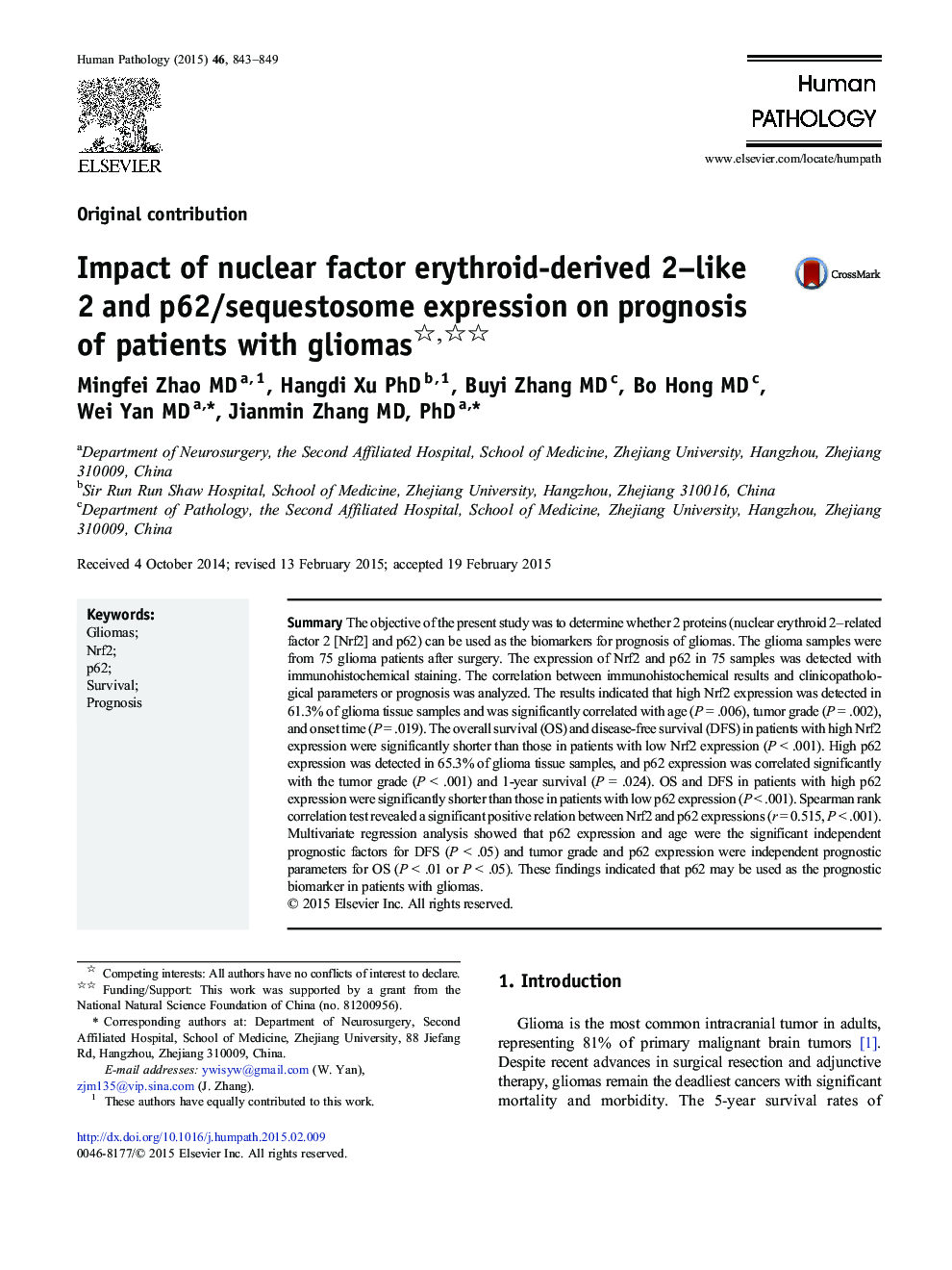| Article ID | Journal | Published Year | Pages | File Type |
|---|---|---|---|---|
| 4132930 | Human Pathology | 2015 | 7 Pages |
SummaryThe objective of the present study was to determine whether 2 proteins (nuclear erythroid 2–related factor 2 [Nrf2] and p62) can be used as the biomarkers for prognosis of gliomas. The glioma samples were from 75 glioma patients after surgery. The expression of Nrf2 and p62 in 75 samples was detected with immunohistochemical staining. The correlation between immunohistochemical results and clinicopathological parameters or prognosis was analyzed. The results indicated that high Nrf2 expression was detected in 61.3% of glioma tissue samples and was significantly correlated with age (P = .006), tumor grade (P = .002), and onset time (P = .019). The overall survival (OS) and disease-free survival (DFS) in patients with high Nrf2 expression were significantly shorter than those in patients with low Nrf2 expression (P < .001). High p62 expression was detected in 65.3% of glioma tissue samples, and p62 expression was correlated significantly with the tumor grade (P < .001) and 1-year survival (P = .024). OS and DFS in patients with high p62 expression were significantly shorter than those in patients with low p62 expression (P < .001). Spearman rank correlation test revealed a significant positive relation between Nrf2 and p62 expressions (r = 0.515, P < .001). Multivariate regression analysis showed that p62 expression and age were the significant independent prognostic factors for DFS (P < .05) and tumor grade and p62 expression were independent prognostic parameters for OS (P < .01 or P < .05). These findings indicated that p62 may be used as the prognostic biomarker in patients with gliomas.
